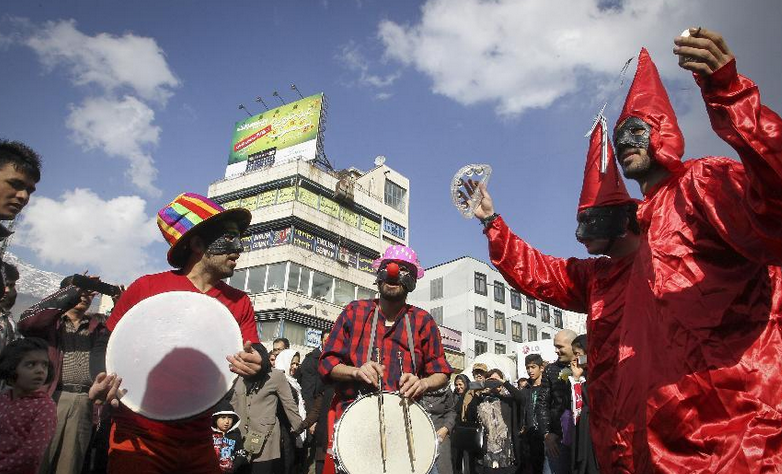Nowruz is the name of the Iranian New Year and is also called the Persian New Year. It marks the first day of spring. Nowruz is usually celebrated on March 21, or the previous or following day. The exact day depends on the country celebrating it. It has been a celebration for people from diverse ethnic and religious backgrounds for thousands of years. Nowruz originated in a geographical area that was called Greater Persia. This is modern-day Iran, Western Afghanistan, Tajikistan, and Uzbekistan. To celebrate, people put a special festive display in their house called a "Haft Seen". Grass is part of the display and when it grows, people are happy because it is a sign of eternal life.
諾魯孜節是伊朗新年,該節日也被叫作“波斯新年”。該節日慶祝的是春天的第一天。通常,諾魯孜節都會在3月21日舉行,或之前一天或之后一天。確切時間由各個國家決定。數千年來,來自不同種族,不同宗教背景的人們都會慶祝該節日。諾魯孜節起源于一個叫作“大波斯”的地方。是如今的伊朗、阿富汗西部、塔吉克斯坦以及烏茲別克斯坦地區。為了慶祝該節日,人們會在家里擺上7道菜,人們叫它“Haft Seen”。人們也會擺放花草,人們會因小草的成長而歡呼不已,因為那是永生的標志。

Nowruz has some of its history in the Zoroastrianism religion. The term Nowruz first appeared in writing in the 2nd century AD. In 2010, the United Nations recognized the International Day of Nowruz. The U.N. described the holiday as a spring festival of Persian origin that has been celebrated for over 3,000 years. The U.N. said Nowruz: "Promotes values of peace and solidarity between generations and within families as well as reconciliation and neighbourliness". It added that the holiday contributes to "cultural diversity and friendship among peoples and different communities". In the month leading up to Nowruz, people clean their homes to prepare for the New Year.
諾魯孜節還與拜火教有淵源。公元2世紀,“諾魯孜”一詞首先出現在了書面文字上。2010年,聯合國公認了諾魯孜節。聯合國認為該節日是波斯的新年,慶祝時間已經超過了3000年。聯合國稱:“諾魯孜節弘揚的是世代人之間,家族內部之間的和平與團結,以及和諧的睦鄰友好關系。還稱諾魯孜節促進了文化多樣性,發展了不同民族,不同社會的有好關系。”這個月諾魯孜節降至,為了迎接新年人們開始打掃房間。
譯文屬可可英語原創,未經允許,不得轉載。











